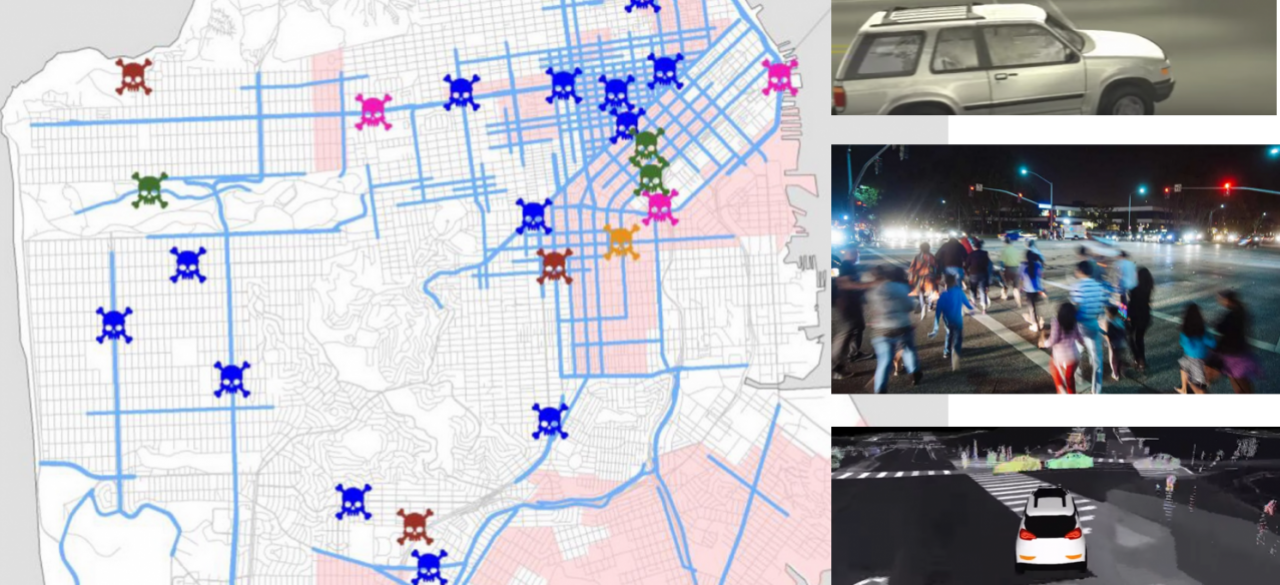How Many Accidents Can AVs Avoid?

ABOUT THIS PROJECT
At a glance
In 2018 AVs reported to California’s DMV an accident every 40,000 miles, and Waymo reported a disengagement every 12,000 miles. While improving each year, these AV safety numbers are still much worse than the 500,000 miles per reported accident in human-driven cars in 2015. Neither the statistically insignificant number of autonomous miles driven nor the claims of the industry provide a reliable estimate of AV safety benefits. This leads to the question: Can one find reasonable estimates of the number of accidents in San Francisco intersections that AVs can be avoid?
Our approach to answering this question is to use ADAS safety data to derive a surrogate for potential AV safety performance. The statistical method called quasi-induced exposure is used to estimate the odds ratio of crash reduction in ADAS-equipped vs unequipped vehicles. AV safety in a specific class of hazardous scenarios will be comparable to that of drivers in vehicles with ADAS designed for the same class of scenarios. Thus, we will be able to estimate how many crashes in San Francisco can be eliminated by AVs. The code for San Francisco intersection crash analysis will be contributed to the BDD repository.
| principal investigators | researchers | themes |
|---|---|---|
ADAS, AV, onboard sensing, infrastructure sensing, safety, crash data, intersections |

